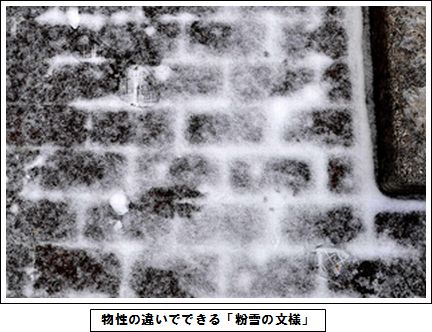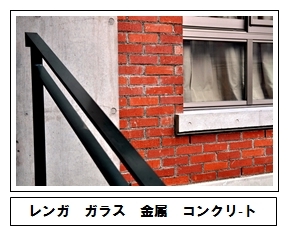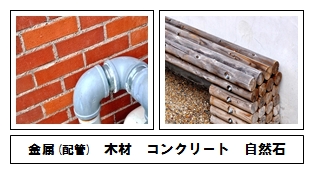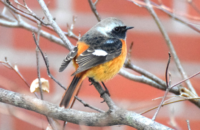 寒い時は室内にこもりがちですが、体調に気をつけながら屋外に出て「冷たさ」を調べる体験もいいものです。
寒い時は室内にこもりがちですが、体調に気をつけながら屋外に出て「冷たさ」を調べる体験もいいものです。
南岸低気圧の影響で、関東地方では異例の積雪となった1月25日は、本校でも路面の雪かきをしました。ところが翌日朝にまた雪が降り、右写真のような模様が歩道にできていました。なぜこのような模様ができるのでしょうか。
学内の構造物を形作っている「もの」にはさまざまな素材があります。レンガ、木材、コンクリ-ト、自然石、柱の目地シ-ル…、私たちは日頃、見慣れた空間では何も気にせず生活しています。ところが、それぞれの物理的性質に注目すると個々の物性の違いが判明し面白いのです。 極寒の時季、金属と木材に触れると明らかに「冷たさ」が異なります。空気層を豊富にもつ木材を触るとどこかあったかささえ感じます。この理由は「熱伝導率」(熱の伝わりやすさ)の違いです。熱伝導率は室温デ-タで、鉄は83.5、空気0.0241と言われていますから3ケタも異なります。空気層があれば熱が伝わりにくいのです。
極寒の時季、金属と木材に触れると明らかに「冷たさ」が異なります。空気層を豊富にもつ木材を触るとどこかあったかささえ感じます。この理由は「熱伝導率」(熱の伝わりやすさ)の違いです。熱伝導率は室温デ-タで、鉄は83.5、空気0.0241と言われていますから3ケタも異なります。空気層があれば熱が伝わりにくいのです。
そう言えば立志館の窓はペアガラスという間に空気層をもった二重ガラスになっています。学校を作っているいろいろなものに実際に触れて、違いを実感してみましょう。 When it’s cold, we tend to stay indoors, but sometimes it’s good to go out and experience the cold.
When it’s cold, we tend to stay indoors, but sometimes it’s good to go out and experience the cold.
When a cold front passed over Japan last month, Tokyo got a lot of snow. There was also some snow on the ground at our school.
It was interesting to see how the snow remained on some surfaces, but not on others, around the school.
In this cold season, you can feel the difference of how cold metal objects and wooden objects get. This is because wood contains small amounts of air, so it feels warmer. This is a result of thermal conductivity. The same can be said for the windows around the school, which are double glazed, so make the rooms stay warmer.



